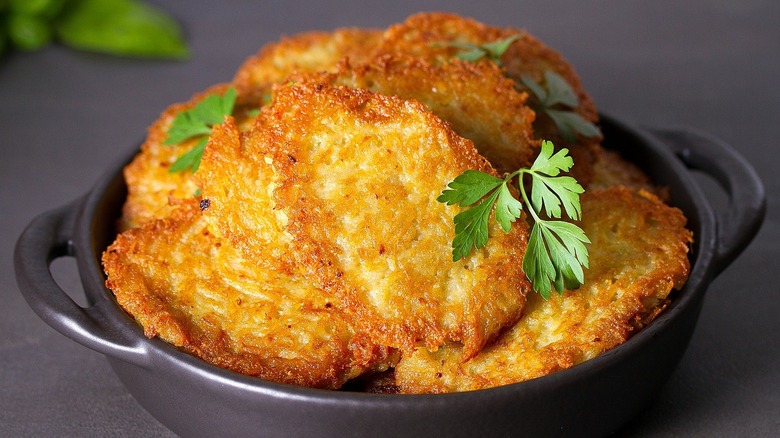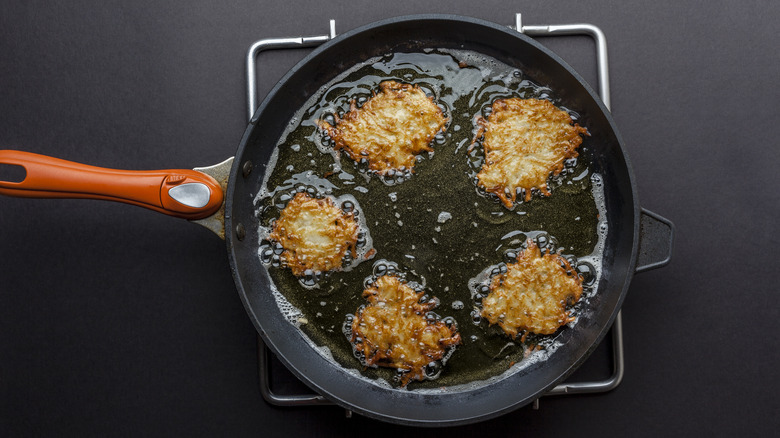The Reason You Should Have A Carrot On Hand When Making Latkes
Latkes, the crispy potato pancakes fried once a year during Hanukkah, are steeped in tradition and nostalgia for many Jewish families. However, the latkes we are familiar with, that Bubbie fried in schmaltz, differ significantly from the OG created in Eastern Europe. According to The Atlantic, the first documented mention of a latke is in the 14th century and has Italian Jewish roots. The first latkes were more like fried ricotta than hashbrowns. Tubers didn't arrive in Europe until the 16th century and weren't widely available for another two hundred years.
The latkes created over the past several generations are made of shredded raw potato, flour, or matzo meal and fried in fat. Influenced by which fat was vilified, the original latkes were fried in schmaltz, chicken fat. Jews immigrating to the U.S. then used Crisco until shortening fell out of favor and was replaced by olive oil, perhaps bringing the fritter back to its Italian roots.
Over the years, variations to the latke have been introduced using sweet potatoes, zucchini, and parsnips, per Epicurious. Cooks have experimented with a fusion of cuisines like Tasting Table's Scallion Pancake Latke, a cross between the Chinese scallion pancake and a traditional latke served with an Asian pear-apple instead of traditional apple sauce.
If nostalgia prevents you from deviating from the traditional potato latke recipe, we have some tips to share to make this Hanukkah's latkes taste as good as your Bubbie's.
Tips for making latkes
In time for Hanukkah, which begins at sunset on December 18 and runs for eight nights until nightfall on December 26, Adeena Sussman of The Kitchn has shared a few tips she calls "fried-and-true" for perfect latkes.
To avoid oxidation, keep the shredded potatoes in a bowl of cold water until you are ready to cook. Avoid a common mistake while making latkes and begin by squeezing the potatoes in a towel to remove all excess water. Any liquid will prevent the latkes from crisping.
To avoid burning the latkes, Sussman recommends using a heavy-bottomed skillet to fry them; using a nonstick is unnecessary. Although latkes can be made in any size, Sussman recommends making smaller ones since they are easier to manage. Despite the story of Hanukkah we were told, Sussman replaced the olive oil with a neutral oil, like canola, with a higher smoking point to avoid burning the oil.
As an insurance policy to keep the oil "pristine and less prone to burning," Sussman places a whole carrot in the frying pan that acts like a magnet, attracting small pieces of food that would burn in the oil. The carrot also helps keep the oil at a consistent temperature and can be used for multiple batches. Once it is wilted and caramelized, replace the carrot with a new one.
Latkes make a delicious side dish that shouldn't be relegated to once a year. Save a few latkes for an unbelievable egg, cheese, and latke breakfast sandwich.

